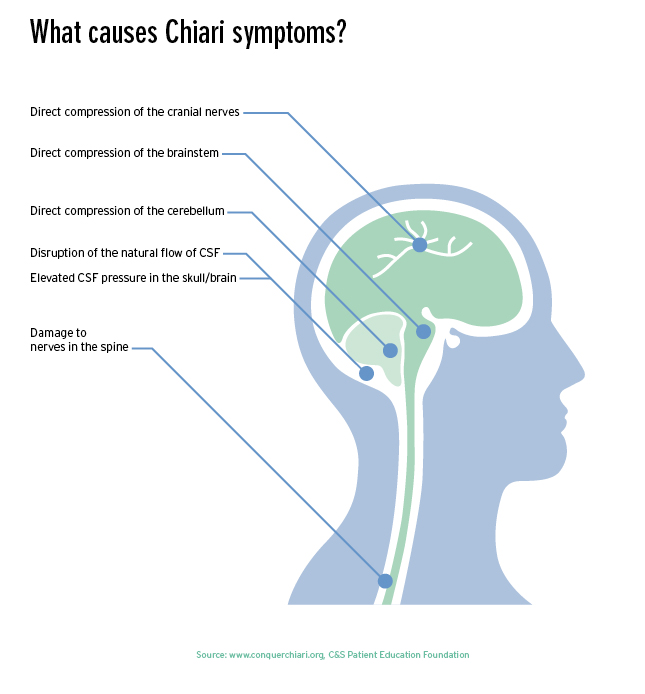
Still other symptoms include auditory problems beyond tinnitus, such as a lowered ability to hear or an increased sensitivity to sound; visual symptoms including double vision, sensitivity to light, and blind spots; and vocal issues such as hoarseness or an inability to regulate the voice when shouting or singing. 95% of patients in the Mueller, Oro study reported experiencing at least ve symptoms.
In the Mueller, Oro study, 20%-50% of patients speci cally reported experiencing depression, body weakness, balance problems, memory problems, leg/foot numbness, hoarseness, chest pain, facial numbness, anxiety, slurred speech, arm pain, abdominal pain, and photophobia.
A small number of patients in the Mueller, Oro study (less than 20%) speci cally reported experiencing tachycardia, trouble hearing, vomiting, double vision, vision loss, blackouts, apnea, vertigo, loss of peripheral vision, nystagmus, earache, snoring, thoracic pain, hypotension, waking up choking, leg pain, palpitations, hypertension, gag re ex, and face pain/tingling.
Symptoms of Chiari malformation.
Most people with Chiari malformation do not experience symptoms until adulthood, usually (although not exclusively) in their 20s or 30s. The specific symptoms experienced by a patient will vary, as will the severity of the symptoms. One patient may only have severe headaches brought on by coughing or sneezing, while another may present with trouble swallowing, respiratory problems, weakness in the arms and legs, and numbness in the hands and feet. The following describes the various symptoms.
Headache
This is by far the most common symptom. In one study (Mueller, Oro, 2004, as cited in www.conquerchiari.org), 98% of 265 patients reported suffering headaches. Headaches associated with Chiari malformation are typically described as causing a feeling of intense pressure. They often start in the back of the head and may also radiate to the area behind the eyes. They can be aggravated by activities such as straining, coughing, sneezing, or laughing, or by bending forward or looking up. These headaches may be mistaken for migraines. In fact, some experts believe there is some type of connection between Chiari malformation and migraine headaches.
Dizziness or vertigo
In the study cited above (Mueller, Oro), 84% of patients reported dizziness. Extending the neck may make the symptom worse.
Neck pain
Some Chiari patients report pressure-like neck pain that radiates down the spine and across the shoulders. Neck pain occurred in 67% of the patients in the Mueller, Oro study.
Other symptoms
More than half of the patients in the Mueller, Oro study reported the following additional symptoms:
| Difficulty sleeping | Shortness of breath | |
| Arm/hand weakness | Blurred vision | |
| Arm/hand numbness/tingling | Tinnitus | |
| Fatigue | Difficulty swallowing | |
| Nausea | Leg weakness |

Causes of Chiari malformation symptoms
Symptoms associated with Chiari malformation are the result of compression of the cranial nerves, brain steam and cerebellum, as well as of disruption of the flow of CSF or elevation of CSF pressure in the skull. Nerve damage in the spine can also cause symptoms.
No one knows exactly why some people who are born with Chiari malformation experience symptoms while others never do. It’s possible that head and neck trauma, or some medical conditions, may trigger or aggravate symptoms.
Research indicates that the amount of protrusion of the cerebellum into the spinal column has no relation to the occurrence or severity of symptoms. A patient with as little as one millimeter of protrusion may have symptoms, yet someone with a much larger degree of herniation may have no symptoms at all




